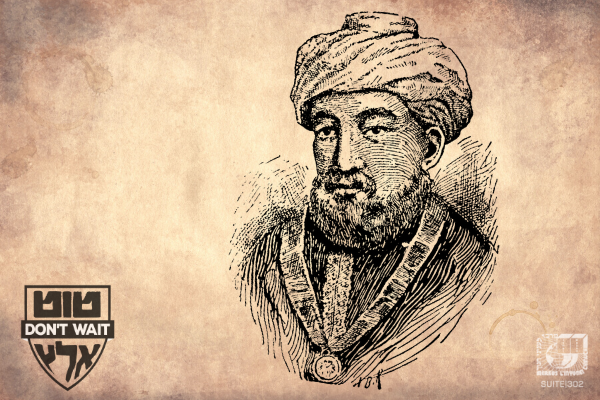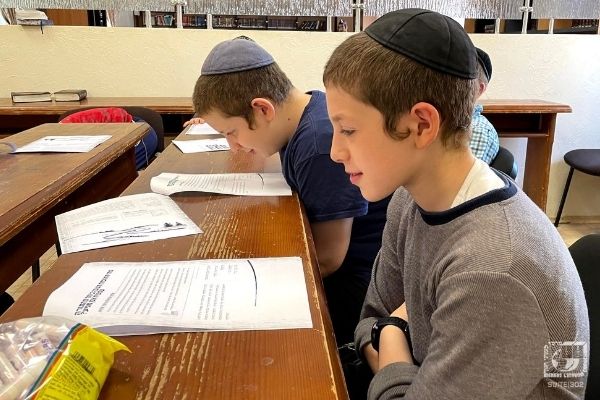Tut Altz, a project of the Moshiach Office at Merkos…

What the Rambam Was Thinking
A Dvar Torah from Tut Altz Segment 3 – Transcend.
Produced by the Rohr Jewish Learning Institute for the Moshiach Office at Merkos 302.
Written by Rabbi Levi Avtzon
(To learn more about this theme which is based on the Sicha of Shmos 5752 of 30 years ago, visit TutAltz.com/transcend)
———–
We have all heard of the Rambam, and we are well aware of the Rebbe’s takana to study Rambam each and every day. When asked the question, “What is so special about the Rambam?”, often the conversation revolves around the sefer. But what is unique and special about the sefer.
In the sichah of Shemos, the Rebbe explores Rambam the individual and his unique life story as a lesson in how to live within Galus and yet transcend it.
Moshe was born in Cordoba, Spain, on the fourteenth of Nisan (erev Pesach) of the year 4895 (1135 C.E.). His father Maimon, a direct descendant of King David, was a judge in the city’s rabbinical court. His mother passed away when he was still a small child.
At the age of thirteen, his family was forced to flee Cordoba when a fanatical Islamic sect took control of the city; the Jews were attacked by rioters and many synagogues were destroyed.
Moshe and his family traveled from place to place looking where to relocate. Not finding anything suitable in Spain, he and his father and younger brother, David, moved to Fez, Morocco, for five years. In 4925 (1165 C.E.), he visited Eretz Yisrael and then moved to Alexandria, Egypt. Later, he settled in Fustat, today known as Old Cairo, where he lived until his passing.
Where did the Rambam author Mishneh Torah? In Egypt. In the darkness of Galus, he composed the transformative sefer that would bring light and life to Yidden for hundreds of years, in the most difficult of circumstances. Even the sefer that guides our daily behaviors—Shulchan Aruch—is based heavily on the Rambam.
In other words, the Rambam teaches us how to live in Galus and yet to completely transcend it. What is going on around us does not define us. A Yid does not have to be defined by Galus.
We see this even more so by the fact that the Rambam authored a sefer that includes every mitzvah, even those that aren’t practiced in the time of Galus. Halachos of the Beis Hamikdash, Halachos of Mashiach—through these he is teaching us that we mustn’t be locked into the mindset of today. We can get ready and live in a world of Mashiach and the Beis Hamikdash. We can live the future within the present.
What does this mean to our lives today?
The Rebbe tasks us with the mission to reveal within our current Galus, within our own Mitzrayim, the Geulah. We do this by preparing ourselves and those around us for the reality of Mashiach living.
One way we do so is by strengthening our commitment to learning Rambam, by committing or strengthening our commitment to the daily learning set up by the Rebbe. By learning Rambam, we take on his incredible strength and vision, and we thereby become able to Transcend.



